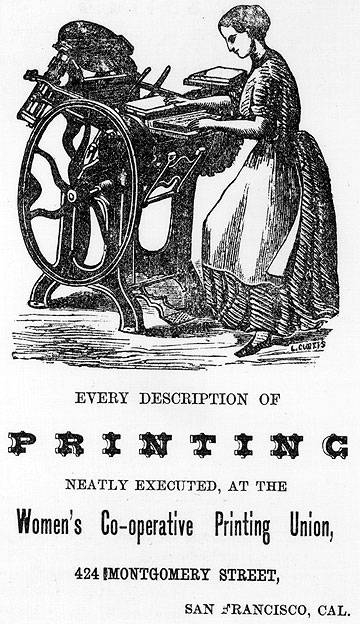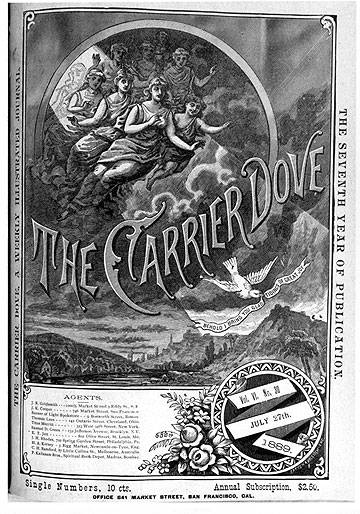Women’s Co-operative Printing Union
Unfinished History
by Mae Silver, excerpted from The Sixth Star
from The Sixth Star
In this advertisement for the Women’s Co-operative Printing Union in Carrie Young’s West Coast Journal, May 18, 1870, note the name, L. Curtis, right at the hemline of the printer’s skirt. As teenagers, Leila Curtis and her sister Mary became fascinated with the process of copper engraving. Both parents, having a background in engraving, encouraged their daughters’ interest. Soon the sisters opened an engraving shop in the carriage house of their San Francisco home at 1117 Pine Street. Mary became the draughtsman, i.e., the artist, and Leila, the block-cutter. That endeavor led to a shop downtown and eventually a partnership called Crane and Curtis (1871). Mary withdrew from the business when she married Thomas Richardson in 1869. Her life’s work became painting; the Richardson house became a mecca for artists and writers. Mary Curtis Richardson became a well known, and very successful portraitist. When Leila married the New York portraitist Benoni Irving (1886), it was clear both sisters again, as in their early life, shared the rich, productive world of art. Another fascinating part of the Curtis history pertains, possibly, to mother Ceilia. A Celia Curtis, note the different name spelling, was one of the July, 1869 patriots who pioneered the California Woman’s Suffrage Association. Could it be that Ceilia and Celia were one and the same early suffragist in San Francisco?
from The Sixth Star
Mrs. Julia Stevens Fish Schlesinger, editor and publisher of The Carrier Dove, formerly a Spiritualist weekly for children, expanded her Oakland publishing business to San Francisco in 1870. The Women’s Co-operative Printing Union landed this plum of a commission. Soon, The Carrier Dove was second only to Emily Pitts Stevens’ The Pioneer, the first suffrage publication in the West. The Dove, therefore, pushed forward women’s right to vote in California.


